Redefining Marketing Measurement: Highlights from the 2025 ANA Measurement & Analytics Conference in Chicago (Part 1)

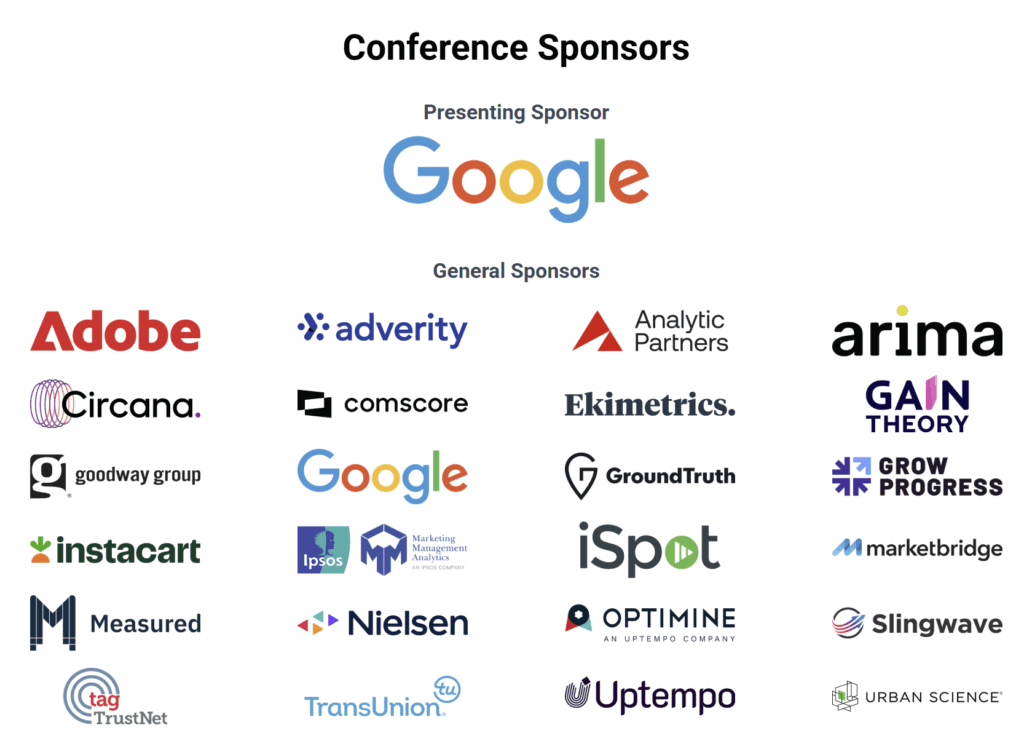
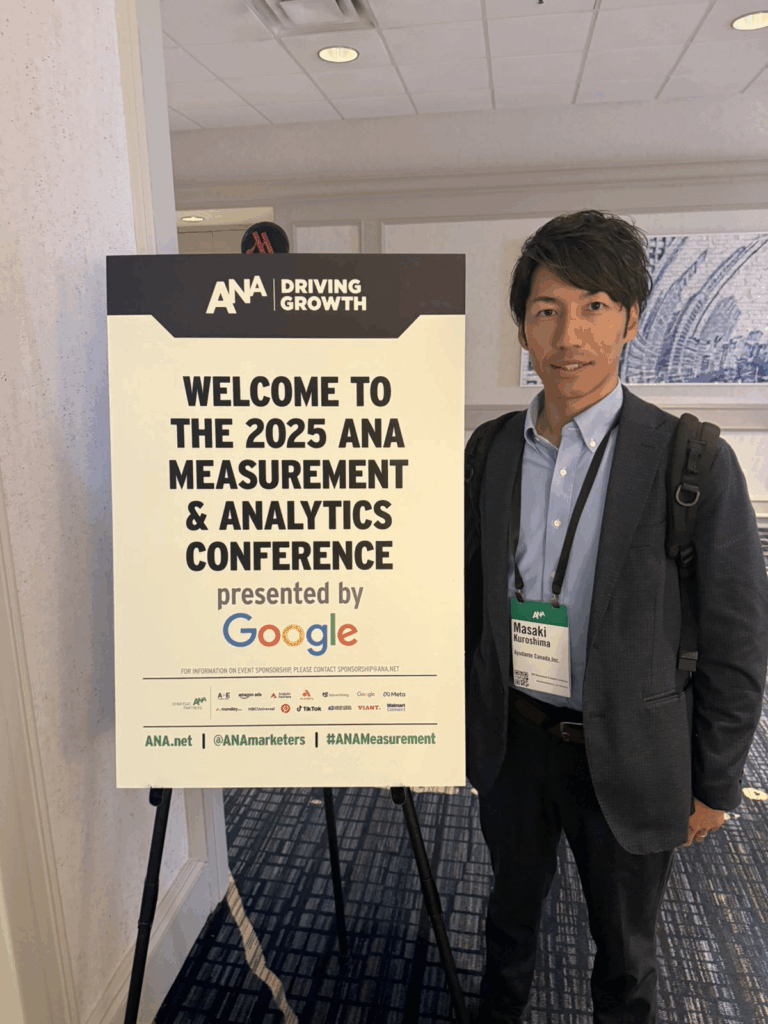
From September 8th to 10th, 2025, I attended the ANA Measurement & Analytics Conference, held in Chicago, USA. Organized by the Association of National Advertisers (ANA), the event gathered marketing, data, and finance leaders to discuss the future of measurement and accountability in our industry. Over three days, participants explored how marketing can prove its true value in an era of economic pressure, data fragmentation, and rapid advances in AI.
- Overall Summary
- Session Highlight①: Google — Reframing Measurement as an Investment
- Session Highlight②: LinkedIn — Building a Common Language Between Marketing and Finance
Overall Summary
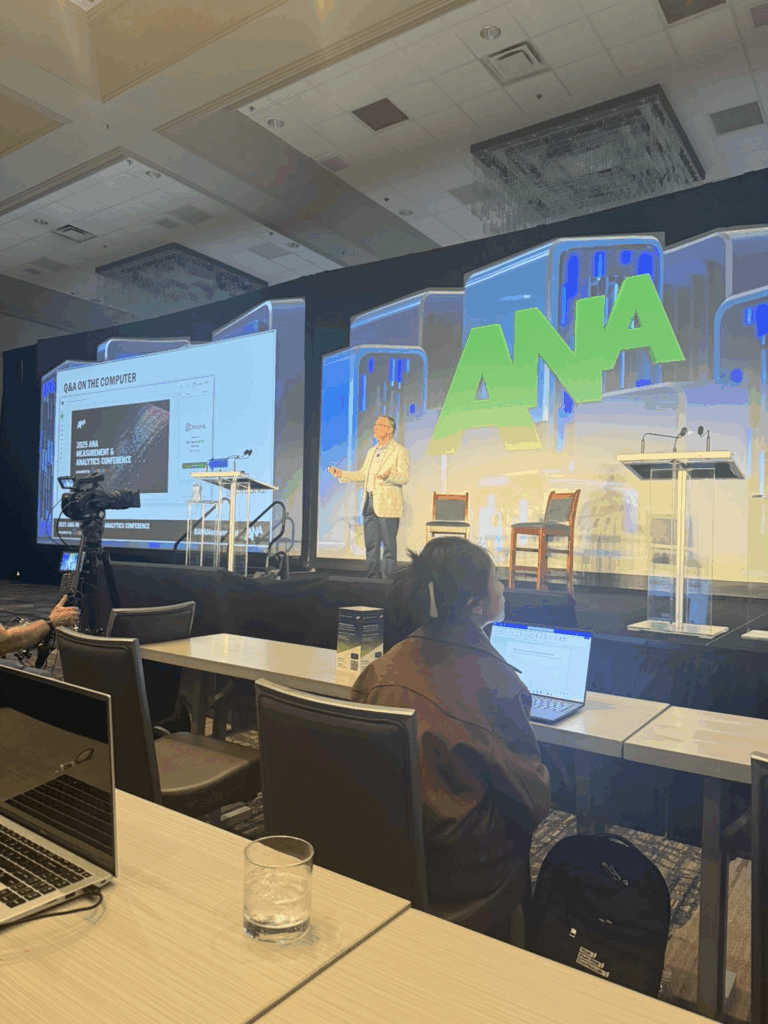
(The Association of National Advertisers (ANA)’s EVP, Measurement for Marketers Jackson Bazley)
Under the theme “The Future of Measurement Starts Here”, the conference addressed the urgent need to prove the true value of marketing in a rapidly changing landscape. Three themes stood out across keynotes and panels.
First, the pressure to prove ROI (Return on Investment) has never been higher. CFOs (Chief Financial Officers) and boards want clear evidence of how marketing spend drives business growth, not just surface-level campaign metrics such as impressions (number of times an ad is shown) or clicks. As one keynote speaker noted:
“Our CFOs are not interested in click-through rates. They want to know how an investment is moving the bottom line forward.“
Second, many organizations are struggling with the fragmentation of measurement systems. Today’s consumer journey spans multiple devices (smartphones, PCs, connected TVs) and multiple channels (online ads, social media, offline promotions). Yet many companies still rely on outdated last-click attribution models, which give all credit to the final click before purchase. This creates blind spots and prevents teams from seeing the full picture.
Third, the AI (Artificial Intelligence) paradox became a recurring theme. While AI promises faster and smarter optimization, its performance depends entirely on the quality of the data it consumes. In other words, if the underlying data is unreliable, AI will simply automate poor decisions at scale. As one speaker cautioned:
“AI is not a magic bullet. It’s only as good as the data you feed it. Junk in, junk out.“
Taken together, these themes highlight a major shift: measurement can no longer be treated as simple reporting. It must evolve into a framework that connects directly to business outcomes—like revenue, profit, or market share—and provides the foundation for smarter decision-making.
The following session highlights will detail how leading companies such as Google, LinkedIn, HP, and Bayer are tackling these issues in practice.
Session Highlight①: Google — Reframing Measurement as an Investment

(From left: Google’s Head of Measurement & Data Analytics Kevin Bilke , Hearts & Science’s Managing Director of Analytics Shamsa Jafri)
Kevin Bilke, Head of Measurement & Data Analytics at Google, delivered one of the most impactful sessions of the conference. His central message was clear: marketing measurement must be reframed as an investment, not a cost. For too long, companies have relied on outdated attribution models and fragmented data systems, leaving finance teams skeptical about the true value of marketing.
Bilke outlined the pressures many organizations face today: CFOs demanding evidence that marketing spend drives profit, teams stuck with “last-click” models that credit only the final touchpoint, and data scattered across online, offline, and brand channels. To make matters worse, issues like missing or inconsistent data erode confidence—especially as AI becomes more central to decision-making. As Bilke reminded the audience, cleaning up poor-quality data often consumes disproportionate resources.
To address these challenges, Google presented its “Measurement Trifecta”:
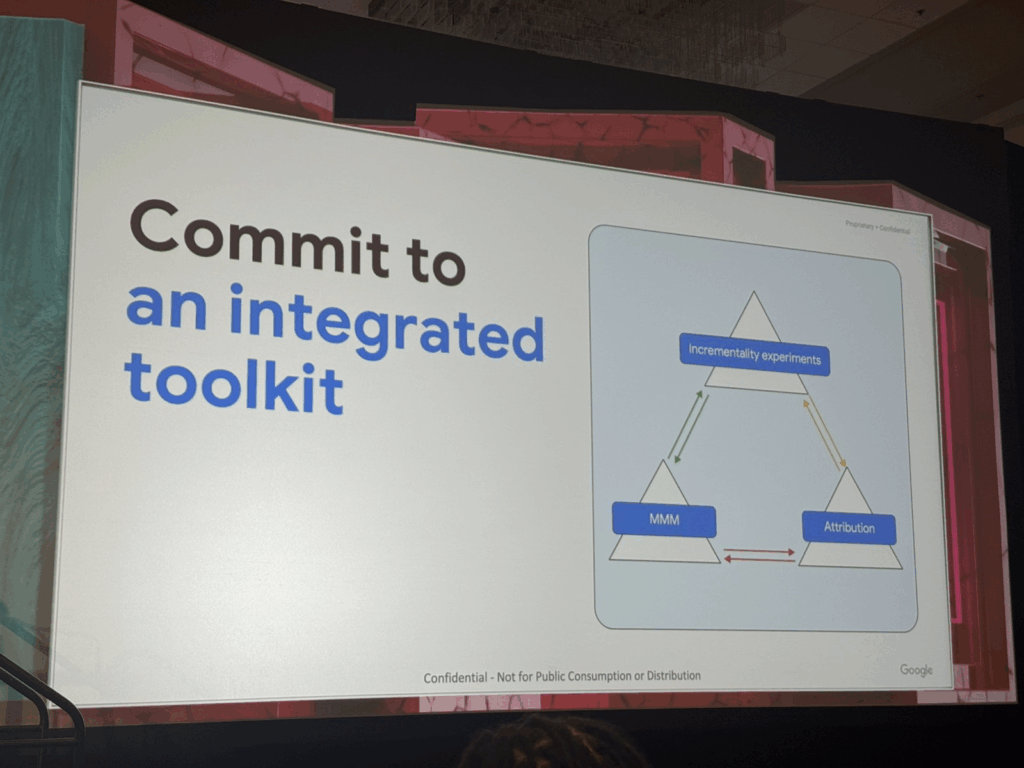
- Marketing Mix Modeling (MMM): capturing the combined impact of all marketing and sales activities at a macro level, crucial in a privacy-first world.
- Data-driven attribution: distributing credit fairly across all touchpoints, not just the last click.
- Incrementality testing: using geo-tests or A/B experiments to isolate true causal lift and validate other models.
Beyond the tools, Bilke stressed cultural change. Marketing teams must speak the language of business outcomes—revenue, profit, market share—and build stronger relationships with finance. Experimentation should become routine, with learnings embraced even when results are unexpected.
Looking ahead, Google sees a future where data is harmonized, measurement is near real-time, and AI serves as an aid to human judgment rather than a replacement. This requires not just better systems but also marketers equipped with the skills to guide and interpret AI-driven insights.
As Bilke put it:
“On one ear, CFOs desperately want ROI quantified. On the other, practitioners know how incredibly hard this actually is.“
“Good measurement can elevate marketing from a cost center to a growth driver.“
Session Highlight②: LinkedIn — Building a Common Language Between Marketing and Finance
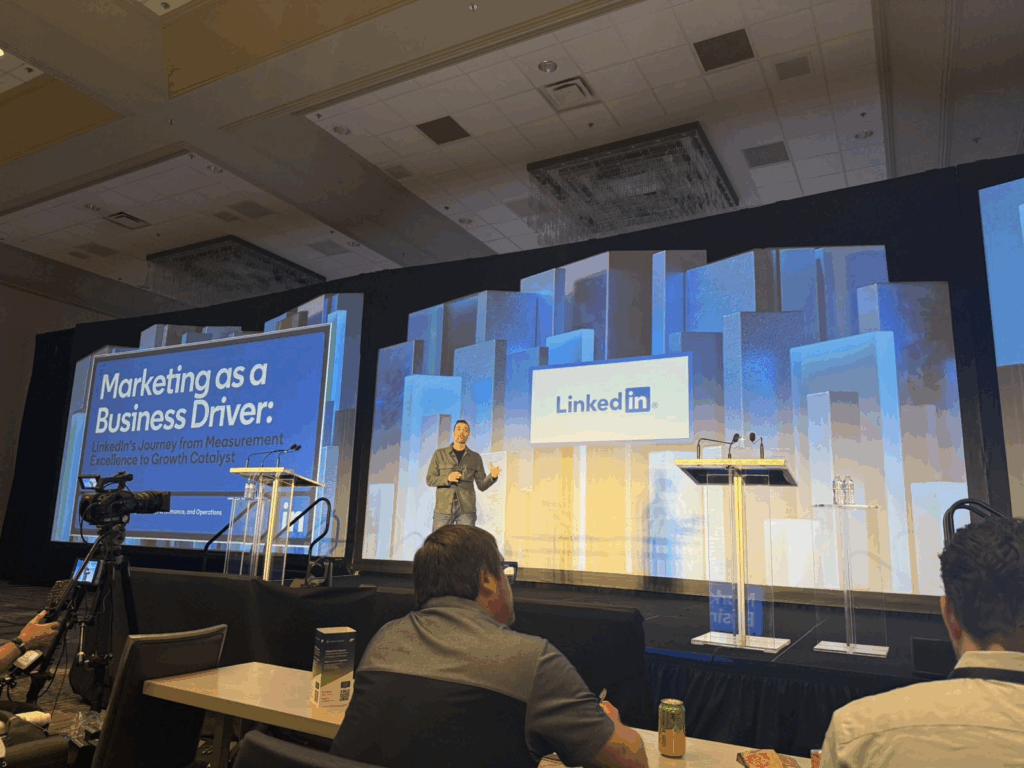
(LinkedIn’s Vice President of Marketing – Growth, Performance, and Operations (GPO) Paolo Provinciali )
In this session, Paolo Provinciali, Vice President of Marketing – Growth, Performance, and Operations (GPO) at LinkedIn, underscored the critical importance of creating a shared KPI framework that unites CMOs (Chief Marketing Officers) and CFOs (Chief Financial Officers). One of marketing’s biggest credibility gaps, he explained, comes from relying on metrics that make sense inside marketing teams but fail to resonate with finance.
For years, marketers have reported campaign-level metrics like impressions, reach, or brand awareness lifts. But as Provinciali noted, these figures often fail to convince CFOs. He pointed to a case study in the CPG (consumer packaged goods) sector: marketers celebrated a +2pt lift in brand awareness, but the CFO responded, “What does that mean for household penetration and revenue?”
To close this gap, Provinciali introduced LinkedIn’s framework: connecting awareness → household penetration → incremental sales. Awareness indicates whether consumers recognize the brand. Penetration measures how many households actually purchase the product. Incremental sales quantify the additional revenue marketing drives beyond baseline demand. By building these causal links, marketers can translate brand investments into terms that matter to finance.
This approach not only provides clarity but also builds trust. Once CFOs see how marketing connects directly to revenue and market share, they become advocates. In several cases, CFOs have defended marketing budgets in the boardroom themselves—shifting the conversation from “justify spend” to “support investment.”
Provinciali’s framework also resonates with the themes shared by Google earlier in the conference. Google’s Measurement Trifecta (Marketing Mix Modeling, attribution, and incrementality testing) and LinkedIn’s awareness-to-sales chain are two sides of the same coin. Both stress that:
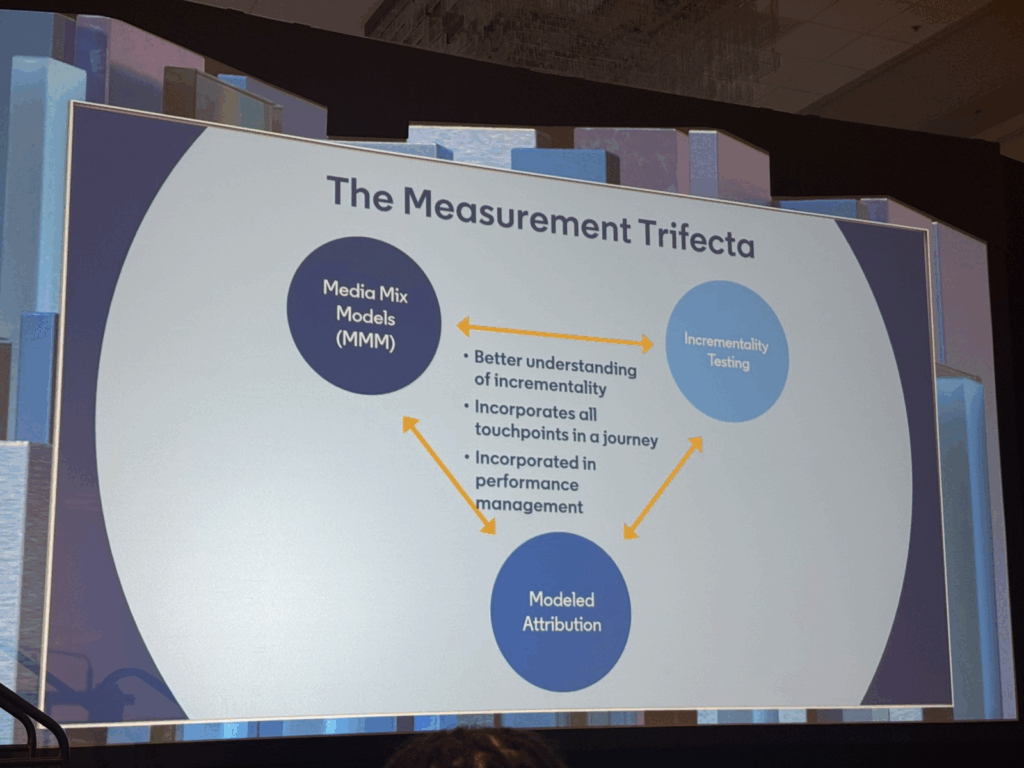
- Marketing metrics must be translated into business outcomes.
- Incrementality is the gold standard for proving true impact.
- Measurement should be used to bridge silos between marketing and finance.
Together, these sessions reinforced the idea that measurement is not just about collecting numbers but about creating a common language across the organization.
As Provinciali summarized:
“No one in the C-suite truly cares about impressions or clicks. You must co-create a language the CMO and CFO can both use.“
“When the CFO becomes your champion, you gain both advocacy and investment.“
🔜 Want more insights? Click here for Part 2 → Highlights from the 2025 ANA Measurement & Analytics Conference in Chicago (Part 2)
We cover Sessions 3 and 4, plus closing reflections from the event.
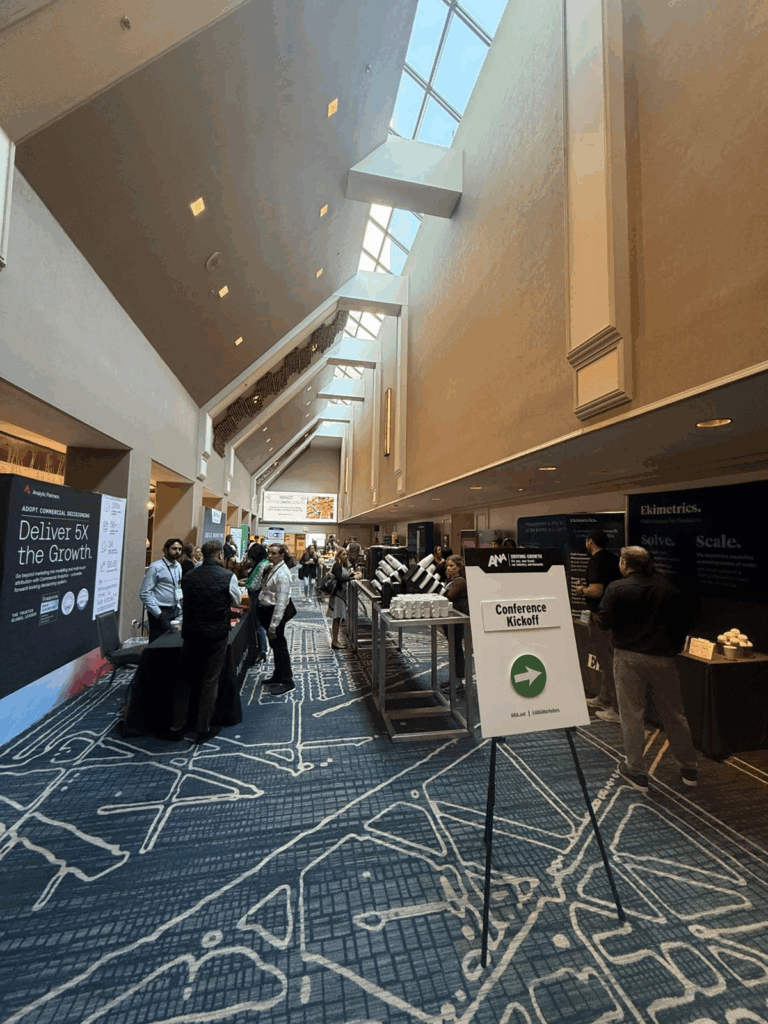
ーThe foyer outside the main conference hall, where many vendors hosted sponsor boothsー
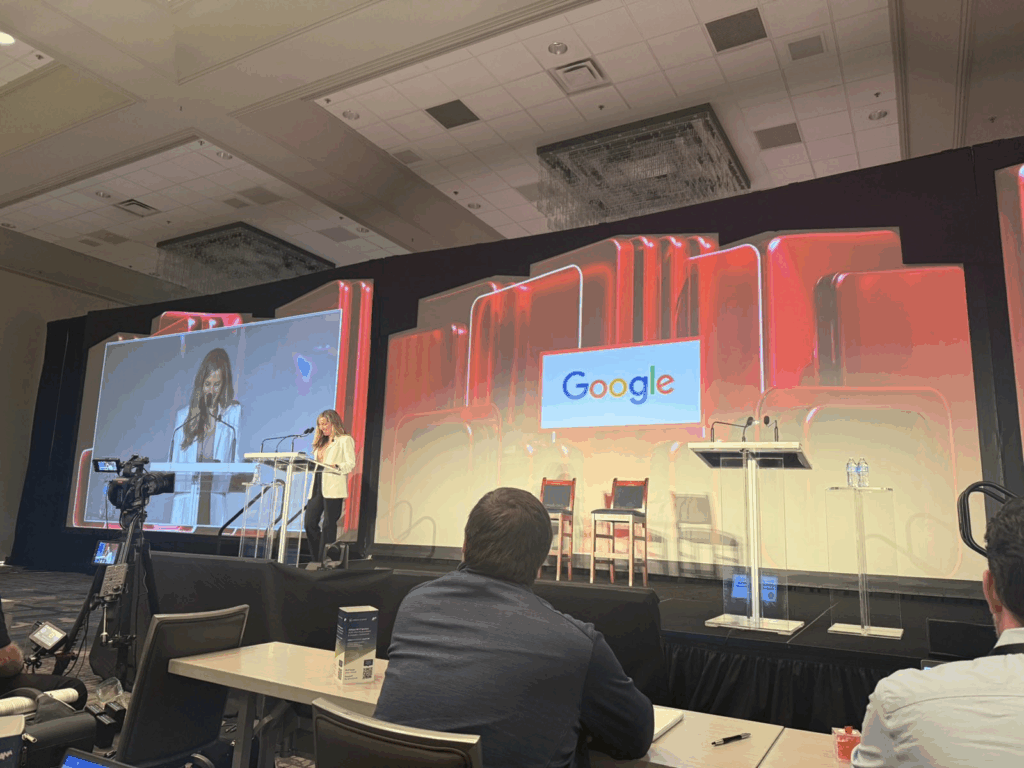
ーThe main conference hall, where many sessions were held over three days, filled to capacityー

